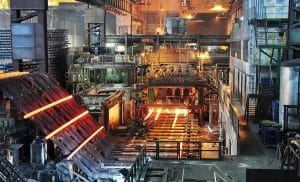 For decades, heat exchangers have become an increasingly more popular solution for companies to keep their electrical control panels and other enclosures properly cooled. As they strive to streamline operations, lower their reliance on energy, and reduce their overall costs, the innovative thermal management solutions have proven a valuable resource. However, for some companies, improved thermal management means more than just reducing costs. For example, in companies that operate in hazardous conditions, electrical cooling solutions also have to provide an optimal measure of safety and an ability to operate with a minimal need for interaction.
For decades, heat exchangers have become an increasingly more popular solution for companies to keep their electrical control panels and other enclosures properly cooled. As they strive to streamline operations, lower their reliance on energy, and reduce their overall costs, the innovative thermal management solutions have proven a valuable resource. However, for some companies, improved thermal management means more than just reducing costs. For example, in companies that operate in hazardous conditions, electrical cooling solutions also have to provide an optimal measure of safety and an ability to operate with a minimal need for interaction.
Common processes for cooling electrical enclosures
In most common applications, the streamlined methods of heat transfer employed by typical heat exchangers are more than enough to achieve optimal thermal management. Heat exchangers are designed to use an eco-friendly cooling fluid to absorb electrical waste heat and transfer it before it has a chance to accumulate within an electrical enclosure. This prevents it from forming heat pockets and causing sensitive components to overheat. Because the heat transfer is contained with an open or closed loop system, it also provides an optimal level of ingress protection against common contaminants, including dust, dirt, and moisture.
Special considerations for hazardous locations
All of these processes are equally essential for electrical enclosures and other equipment that operate under hazardous condition. However, there are also several additional concerns regarding the heat exchangers ability to withstand intense temperatures, pressure, heightened levels of contaminants, and hazardous materials and debris. Heat exchangers employed under hazardous conditions must meet the same enhanced requirements that all electrical enclosures have to meet under such conditions. Fortunately, doing so is easier thanks to heat exchangers’ innovative thermal management methods and high level of adaptability to demanding situations.
Meeting those challenges with advanced heat exchangers
While conventional heat exchangers offer standard levels of protection, those that are specifically for use in hazardous locations are designed to continue operating under virtually any conditions. For example, closed-loop heat transfer can completely isolate the thermal management process to ensure that no hazardous debris, chemicals, or materials can entire the heat exchanger. High-quality neoprene gaskets and seals ensure the same protection between the heat exchanger and electrical enclosure that it’s attached to. Because heat exchangers can operate continuously with little or need for maintenance or repairs, they also optimize safety for employees by limiting the need to venture into hazardous conditions.
For more information about cooling electrical enclosures in hazardous locations, call Noren Thermal Solutions in Taylor, TX, today at 866-936-6736.







